READY TO GET STARTED?
REQUEST A FREE ESTIMATE
Fill out the form below or call (888) 466-7849 for a free, no-obligation estimate.
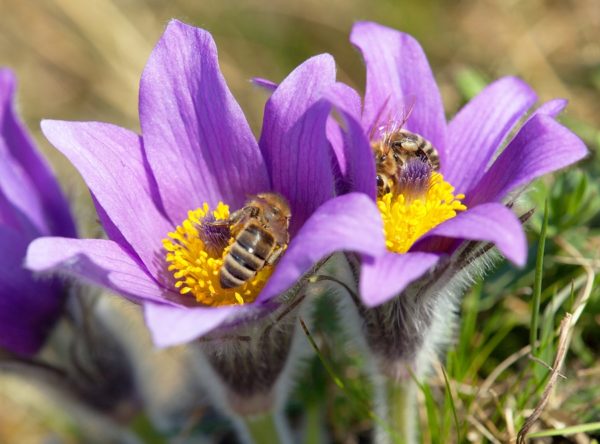
Pollination is when pollen grains are transferred from one flower to another. Pollination allows plants to produce seeds which is how they reproduce. Pollinators are animals and insects that are responsible for helping with the pollination of over 80% of the world’s flowering plants. Animal pollinators are vital in the reproduction of flowering plants and the production of most fruits and vegetables. They accomplish this by getting their food from flowers (think nectar and pollen) and collecting pollen on their bodies in the process. They then move on to another plant and leave the hitchhiking pollen behind, providing the new plants with the pollen they need to reproduce.
Some of the most common animal pollinators that come to mind are bees and butterflies. But did you know there are several other animals you might not have known who are expert pollinators? Here are a few animal pollinators along with the types of plants they pollinate:
Ants love nectar. Because they don’t fly they have to crawl into flowers to get to this nectar. Once inside the flower, pollen sticks to their bodies, allowing them to transfer it to other flowers when they move on. Tropical plants have nectar outside their flowers to attract ants to them. They then use these ants as “protectors” from other insects.
Ants pollinate flowers that:
Bats are known as one of the “night shift” pollinators. They are most common in tropical and desert climates. They are prevalent in the southwest US, Africa, Southeast Asia, and the Pacific Islands as pollinators. In fact, mangoes, bananas, and guavas depend on bats for pollination. In the US and Central America, the agave plant (which is used to make tequila) and the Saguaro cactus are also dependent on bats for pollination.
Bats pollinate flowers that:
Bees are known as the “champion” pollinators and are also the most common. There are over 4000 species of bees in the United States alone. Bees purposefully visit flowers to collect pollen and nectar which they use to feed themselves and their young. Many flowers that bees pollinate have an area of low UV reflection near their centers. Humans can’t see UV reflection so we don’t notice them. Bees, however, use them as a target to guide them to the center of the flower.
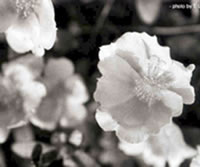
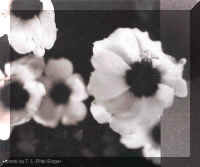
Human Perspective Bee Perspective
Photos courtesy of Apalachicola National Forest.
Bees pollinate flowers that:
Beetles were among the first insects to visit flowers. They are important pollinators for ancient species like magnolias. They are known as “mess and soil” pollinators because they eat through flower petals to get to the nectar and then defecate inside the flowers. Fossil records show that beetles were abundant as far back as 200 million years ago.
Beetles pollinate flowers that:
Birds are important pollinators of wildflowers. Hummingbirds are the most important bird pollinators in the United States. In the eastern United States there is only one species that acts as a pollinator and that is the ruby throated hummingbird. Hummingbirds have good eyesight and are extremely attracted to red flowers. They use their long bills to collect nectar and the pollen then dusts their heads and faces.
Hummingbirds pollinate flowers that:
Butterflies are very active during the day. Their body structure doesn’t allow them to pick up as much pollen as bees and other insects but they can see red where bees can’t. Butterflies produce scents that attract other butterflies of the opposite sex. This scent they produce smells like the flowers that they are attracted to.
Butterflies pollinate flowers that:
Two winged pollinators include flies, gnats, and mosquitoes. These insects aren’t as fuzzy as bees so they don’t pick up as much pollen. They are still, however, important pollinators, especially for some species of orchids.
Two-winged insects pollinate flowers that:
Moths are the other member of the pollination “night shift” along with bats. Some moths are also active as pollinators during the day. The yucca plant is one important plant that is dependent on moths for survival.
Moths pollinate flowers that:
Wasps look like bees but have much less hair. This makes them less efficient as pollinators because pollen is less likely to stick to their bodies. Wasps need pollen and nectar for energy. Fig wasps are responsible for pollinating almost 1000 species of figs.
Wasps pollinate flowers that:
There are several other uncommon pollinators. Lizards, geckos, and skinks can be pollinators. They climb inside flowers to drink the nectar and the pollen then sticks to their scales. Lemurs and possums can also pollinate. They use their snouts and tongues to get nectar from plants and then have their faces and snouts dusted with pollen.
We consider most of the animals and insects that are pollinators as nuisances and pests. As much as we don’t want them in our homes, they do play a very critical role in the survival of plants and food. It is important that while we should take steps to prevent them from invading our homes, we should be very careful with how we handle them should they make themselves at home in our area. If you suspect you have a problem with any of these pollinators, contact a professional pest control company who can give you a thorough evaluation and provide you with a treatment plan that both benefits you and protects these important species.
Bees and wasps are often confused for one another. Although they both belong to the hymenoptera order and share similar features, they are different. Below is a list of basic shared features, as well as a list of features that set them apart from one another.
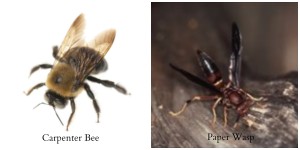
Pictures courtesy of NPMA
Bees AND Wasps
Bees
Wasps
For bee and wasp removal, call our team at Northwest Exterminating!
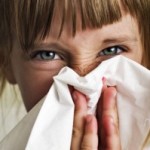 After a season filled with clouds and rain, I believe most of us are excited for the warmer temperatures that the spring is bringing us. However, not everyone is enjoying the fresh air of spring, especially not those suffering from allergies. Sneezing, itching, and watery eyes shouldn’t be synonymous with spring.
After a season filled with clouds and rain, I believe most of us are excited for the warmer temperatures that the spring is bringing us. However, not everyone is enjoying the fresh air of spring, especially not those suffering from allergies. Sneezing, itching, and watery eyes shouldn’t be synonymous with spring.
Reports have been made that this could be one of the toughest allergy seasons that we’ve seen in years. A recent pollen count in Atlanta just last week (4/11) was 8,024 (anything over 1,500 is considered extremely high). Pollen is everywhere so it can be difficult to avoid. Below are some steps you can take to reduce your exposure to pollen:
Sources:
http://www.webmd.com/allergies/spring-allergy-tips
http://www.atlantaallergy.com/
Although it may not feel like springtime just yet…spring is on it’s way which means flowers blooming, birds chirping, sun shining, and of course…sneezing, itchy watery eyes, and yellow pollen everywhere. Welcome hay fever!
Common symptoms of hay fever are nasal congestion, sneezing, watery eyes, coughing, postnasal drip, facial pressure, and fatigue. The large number of pine trees along with various other trees, grasses, and weeds we have in Georgia is a major contributor of pollen. Each plant has a pollen season which begins as early as January and lasts until November.
Short of locking yourself indoors, there are steps you can take to limit the amount of pollen in your home and car:
So take a deep breath and just breathe!
Barry Teubert
Northwest Exterminating
Savannah Service Center Manager
[email protected]
Disclaimer: These tips are general medical information and do not constitute medical advice. Please contact your physician for information about yourself or your family member.
Spring has arrived and brought pollen with it. Yesterday’s pollen count is the highest ever recorded in Atlanta for that date. According to Atlanta Allergy and Asthma Clinic, the record number was 9369 per cubic meter.
If you have springtime allergies you are probably having a tough time right now due to the extremely high pollen counts. Even people who do not normally have allergies can be having some difficulties with the pollen.
Symptoms include:
Tips To Avoid Pollen:
Treatment for Hay Fever Symptoms:
If you have a cough, wheezing or difficulty breathing, immediately call your doctor. For serious breathing problems call 911. You may be having a serious problem like an asthma attack. Treatment may include breathing treatments or steroids. You will definitely need to see your doctor if you are concerned about your cough or breathing.
In general, anti-histamines (like diphenhydramine, loratadine, cetirizine, and fexofenadine) are the first thing many people try because they decrease the allergic response. There are multiple over the counter preparations that work pretty well, but oftentimes one works better for one individual than another, and some have less side effects, like sedation, than others. There are prescription medications as well that your doctor can prescribe to you.
Decongestants help by relieving the inflammation and congestion that comes with the allergic response. Medications like pseudoephedrine and phenylephrine are available over the counter but can have serious side effects, so talk to your doctor or pharmacist before you begin taking them.
Steroids also decrease the inflammation related to allergies so they are used commonly if the anti-histamine or decongestants are not effective. Steroids are always prescribed by a physician or health care provider and cannot be obtained over the counter.
For itchy eyes (Allergic Conjunctivitis) there are many types of over the counter drops that work very well. One product has pheneramine (anti-histamine) and naphazoline (gets the red out). As with any medicine it can have side effects so contact your doctor if you are taking any other medications before you use it. Please discuss the treatment with your physician if you have any concerns.
Sneezing, runny nose, and congestion are symptoms of Allergic Rhinitis. There are many different preparations for this as well starting with decongestants which dry up your nose. Other preparations are steroid nasal sprays and medicines that stabilize the allergic response.
Enjoy Spring, but be careful if you are having allergic symptoms and call your doctor for any medical advice. CorrectMed Pediatrics can answer your questions and treat you if needed.
Thanks,
Dr. Goo